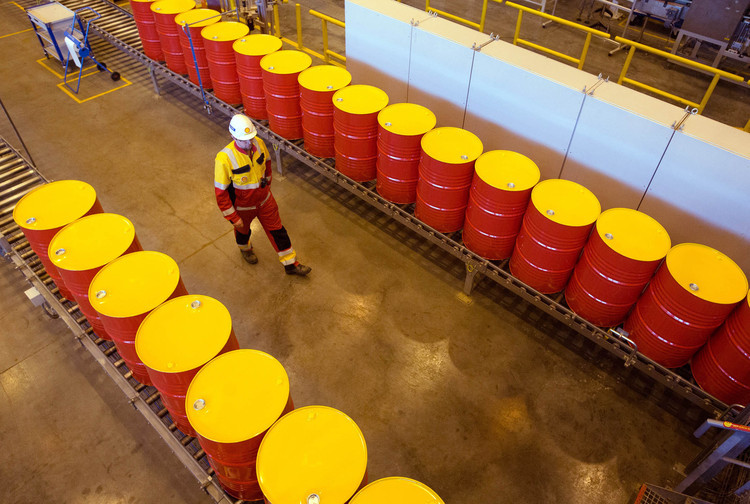
Ask any oil-company accountant, “what’s the difference between income and cash flow?” and they’re likely to say income makes the headlines, cash pays the bills.
It may be glib, but there’s a nub of truth there. Cash generation is the yardstick used to judge a company’s ability to invest and pay dividends, and it’s been growing at the biggest oil producers for three quarters in a row.
Last quarter the world’s largest listed energy companies — Exxon Mobil Corp., Royal Dutch Shell Plc, Chevron Corp., Total SA and BP Plc — reported cash from operations of almost $26 billion, up 67 percent from the previous three months and more than double the first-quarter amount, according to data compiled by Bloomberg.
“The environment’s been tough but we’ve seen robust cash-flow delivery,” Brian Gilvary, chief financial officer of London-based BP, said Nov. 1 on a call with investors.
The growth in cash reflects lower day-to-day spending, higher oil and gas output and rallying crude prices. And if prices don’t fall again, next year could see the trend hold.
“Cash deficits should start to shrink in 2017 as oil prices gradually recover and cost-cutting initiatives continue,” said Maxim Edelson, a senior director at Fitch Ratings Ltd. in Moscow.
Read more: EY’s take on growing oil-industry optimism and the outlook for M&A
To be sure, cash creation remains lower than a year ago, when oil majors generated $36.5 billion in the third quarter. And it’s well below the heyday of $150 crude, when the top five companies produced more than $65 billion in the first three months of 2008.
The majors remain unable to generate enough cash to cover investments in new projects and payouts to shareholders, meaning debts continue to rise. At the end of September, their combined debt totaled $142 billion, up from $46 billion a decade ago, according to data compiled by Bloomberg.
But in a show of confidence, companies told investors that if oil prices stabilize next year above $50 a barrel, cash generation will be strong enough to cover dividends and investments, and even reduce debt with the help of asset sales.
“Our overall financial picture is set to improve in a meaningful way as we move into 2017,” Patricia E. Yarrington, CFO of San Ramon, California-based Chevron, said Oct 28. “Our objective is to get cash balanced in 2017, assuming $50 Brent prices.”
Brent crude lost 3.1 percent to $44.63 a barrel at 12:36 p.m. Singapore time. The benchmark grade topped $53 in October.
All of the five majors, bar Shell, posted lower year-on-year profits in the third quarter. Shell saw earnings boosted by its acquisition of BG Group Plc, and reported cash of $8.5 billion, up from $2.3 billion in the previous three months. That allowed Europe’s largest oil producer to almost balance its books.
While the BG purchase helps explain the increase in cash, Shell has also been chipping away at day-to-day costs. Operating expenses, or opex, stood at $10 billion last quarter, about $600 million lower than a year earlier — despite the added cost of running BG. And executives say more savings are coming.
Opex will fall about 25 percent next year compared with 2015, Shell CFO Simon Henry told investors Nov. 1 on a conference call. “Where does it come from? Well, pretty much everywhere,” he said of the cuts.
Competitors reported similar savings, taking the ax to everything from office supplies to business-class travel. Chevron plans to reduce opex by at least $2 billion this year from 2015. France’s Total is targeting cost cuts of more than $2.7 billion in 2016 compared with 2014, up from an initial goal of $2.4 billion.
“Cash flow is improving,” Total CFO Patrick de la Chevardiere told investors on Oct. 28. “Cash flow is our primary metric.”
Recommended for you
